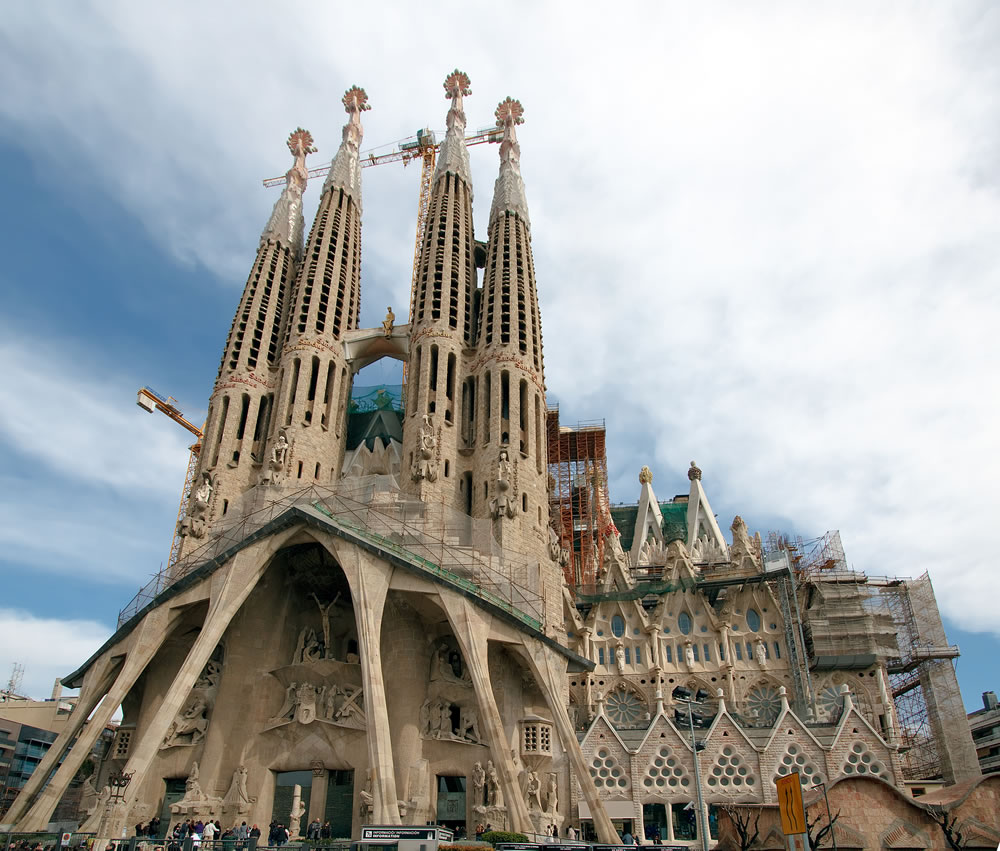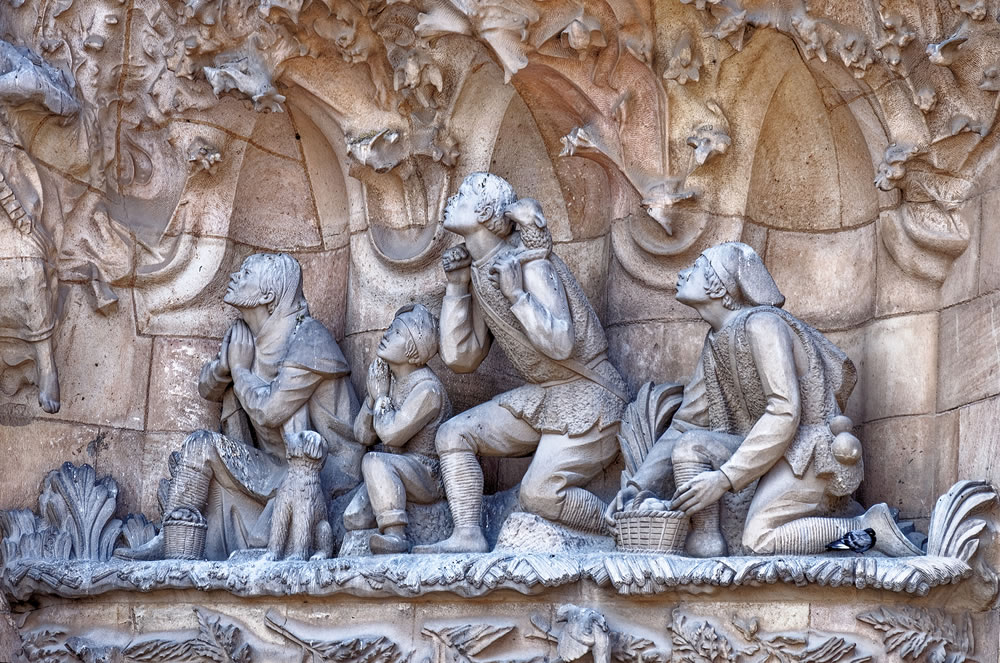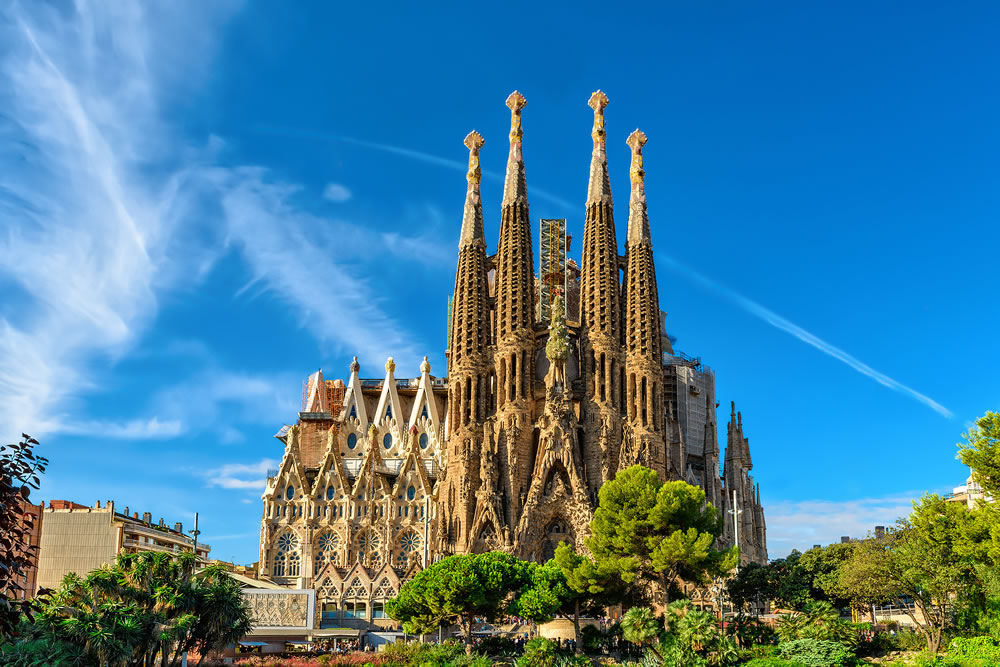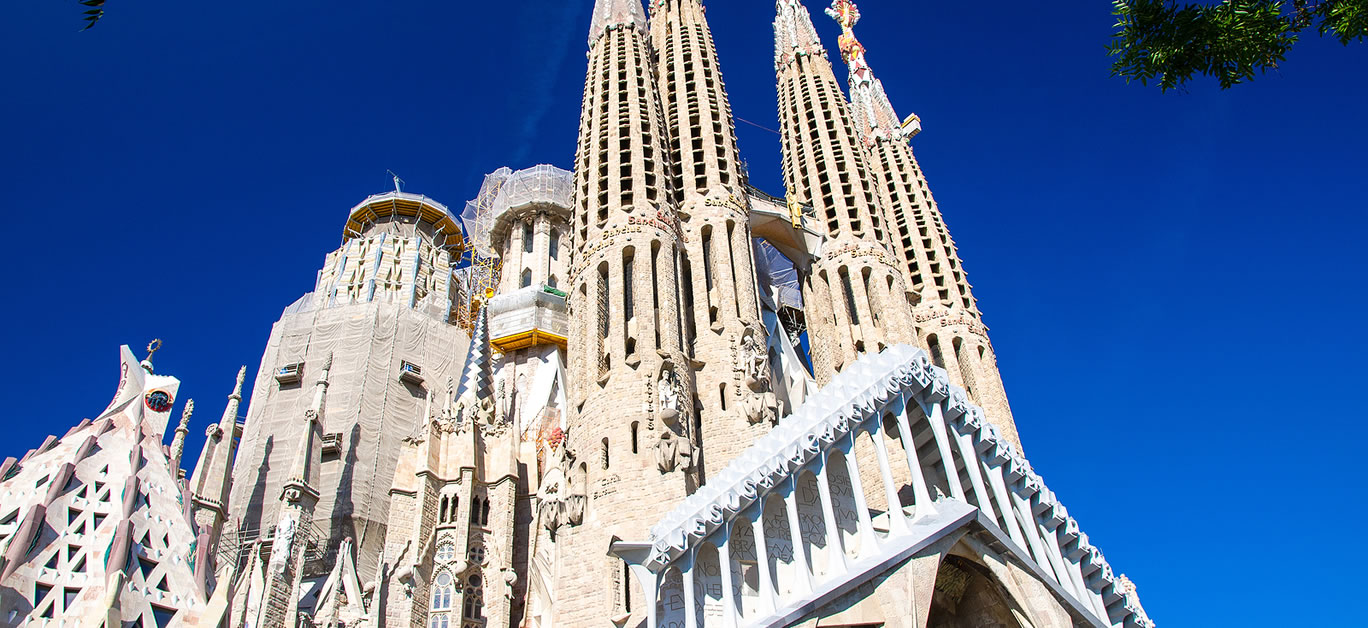Towering above the iconic Barcelona skyline, the instantly recognisable La Sagrada Familia cathedral stands proud as an example of the kind of breath-taking architecture the world has rarely seen. The Basilica of the Holy Family, as its name translates to, is a stunning tribute to the Roman Catholic faith and Modernist architecture that was dreamt up by famed Spanish architect Antoni Gaudi, and attracts tourists from across the globe who are eager to set eyes on it first-hand and witness the finishing touches being put on a building that has thus far taken over 100 years to construct.
Exactly when it will be finished is anybody’s guess, but the Spanish basilica, which has a distinct form that combines several styles in a building that is as breath-taking as it is imposing, stands out from other iconic structures around the world because such great care and attention to detail has been poured into getting it just right – no matter how long it takes. In all likelihood, it could have been finished many moons ago in some form or another – yet so intricate is its design and so meticulous the work that goes into it that rushing it would feel almost sacrilegious.
So, what exactly is it that makes this incredible bucket list must-see so special? Its story so far is really quite something. Here’s all you need to know about the Sagrada Familia, including why it should be top of your travel agenda for 2022 if you have yet to visit it.

A rich and lengthy history
To fully appreciate this masterpiece of engineering and architecture, understanding its history is key. The origins of La Sagrada Familia date back to 1872, when a bookseller named Josep Maria Bocabella (who also happened to be the founder Asociación Espiritual de Devotos de San José, or the Spiritual Association of Devotees of St. Joseph), came back from a trip to Italy. On his travels, he had seen the Basilica della Santa Casa in Loreto, and was inspired to create a similar place for worship in his own town of Barcelona.
On Saint Joseph’s Day, March 19, 1882, construction first began on the enormous structure, with the initial plan being for it to take on the form of a Neo-Gothic cathedral, but when the original architect, Francisco de Paula del Villar, resigned from the project, the team went back to the drawing board.
In 1883, Catalan architect Gaudí took over, and did so with a passion his predecessor lacked. Completely redesigning the building from scratch, he melded the Gothic style with Art Nouveau in a way that had never been seen before, with an ambitious plan for an incredible 18 spires with sculptures on the top. Aiming to symbolize the 12 Apostles, the four Evangelists, the Virgin Mary, and Jesus Christ himself in addition to the main structure, façades, and other ornate pieces, Christ’s spire was meant to be the tallest, but, as it turned out, it was not to be completed in Gaudí’s lifetime – or even yet in ours.

Construction catastrophes
Few would deny that Gaudí’s design was an extraordinary one – and today, it’s just as impressive as it was when construction first began. So dedicated was Gaudi to perfection and innovation that he even did acoustic studies so that the bells he wanted to place within the 18 spires would make just the right sound, at just the right pitch, inside the church. When its construction was complete, it would have been the tallest building on the planet, even by today’s standards. But that construction has not yet been completed, so whether it still will be when that day finally arrives remains to be seen.
After Gaudí took over the project, construction times slowed down, in part due to the fact that the initial funding was provided solely by local churchgoers. After a while, though, even those in Barcelona at the time began to wonder if it would ever be complete. When asked about this directly, Gaudí is said to have responded, “My client is not in a hurry.”
Sadly, Gaudí himself died in 1926, leaving the basilica only 15-25 percent complete. He was buried in the crypt, and remains part of his dream project to this day. His most devoted apprentice, Domènec Sugrañes i Gras, took over the project next, but Gaudí’s death was only the first problem that the construction team faced.
In 1936, the Spanish Civil War broke out, halting construction once again, with Catalan anarchists destroying part of the already-unfinished basilica. Not only that, but they also defaced Gaudí’s workshop and many of his models of the finished building. What remained of his plans were scraped together and a new plan was made, which was then burned in a fire.

The unfinished basilica: When will it finally be complete?
Since the 1940s, the redesigned project has been led by architects Francesc Quintana, Isidre Puig Boada, Lluís Bonet i Gari and Francesc Cardoner, with help on the lighting by Carles Buigas and numerous directors – some of whom have begun to introduce computers and other technology into the construction process in an attempt to simplify and speed it up while still respecting Gaudí’s original ideas.
The central nave, the main part of the basilica, was not completed until 2000. As of 2021, nine of the 18 original spires have been completed, but it is not clear how much longer it will take to complete the rest. In October 2015, it was estimated that construction was 70 percent complete, and the head architect’s hopes were (and are) to have the rest of the steeples finished by 2026, the one hundredth anniversary of Gaudí’s death.
In 2022, the basilica is a major tourist attraction, and visitors can enter the building for between just €15 to €20, with the proceeds going toward funding the seemingly endless construction – so if a luxurious stay in Barcelona is on the cards for you this summer, then don’t hesitate to pay it a visit.
It is hoped that the decorative elements of the structure should be complete by, at the latest, 2032, but only time will tell whether this will be the case. Here’s hoping there are no more hindrances in the meantime!






















